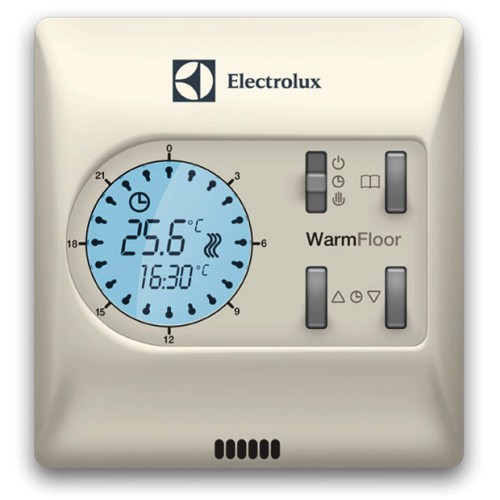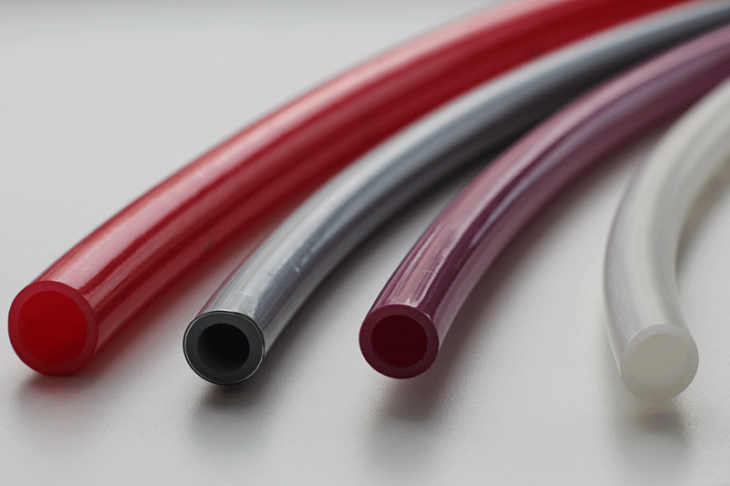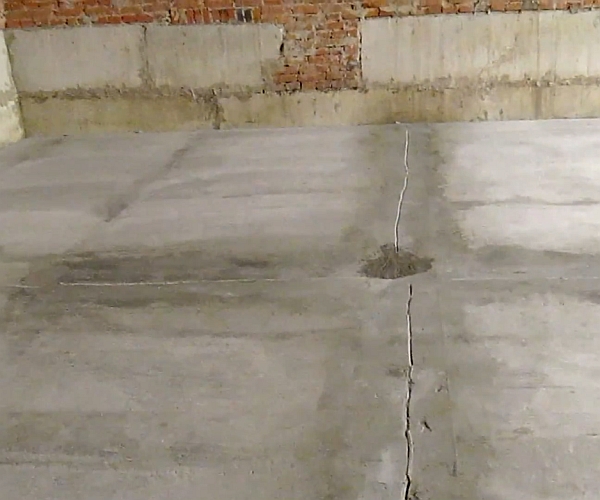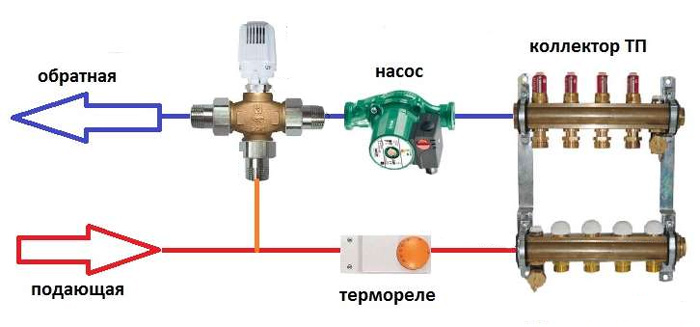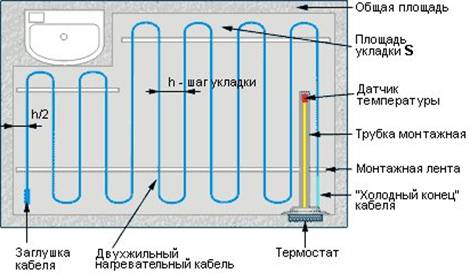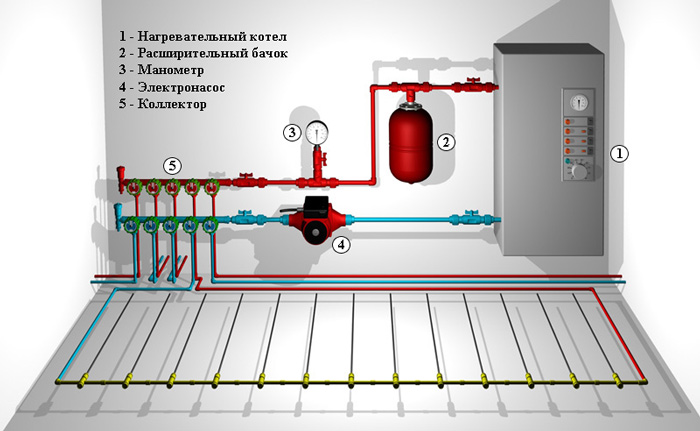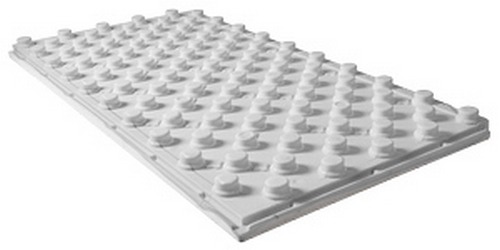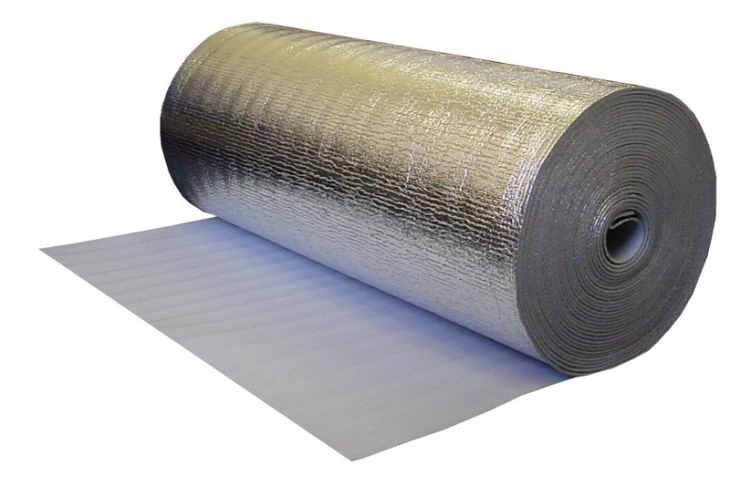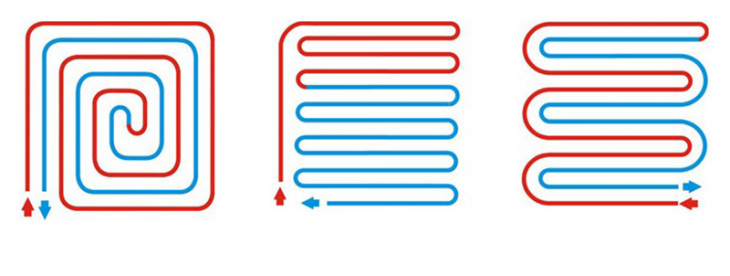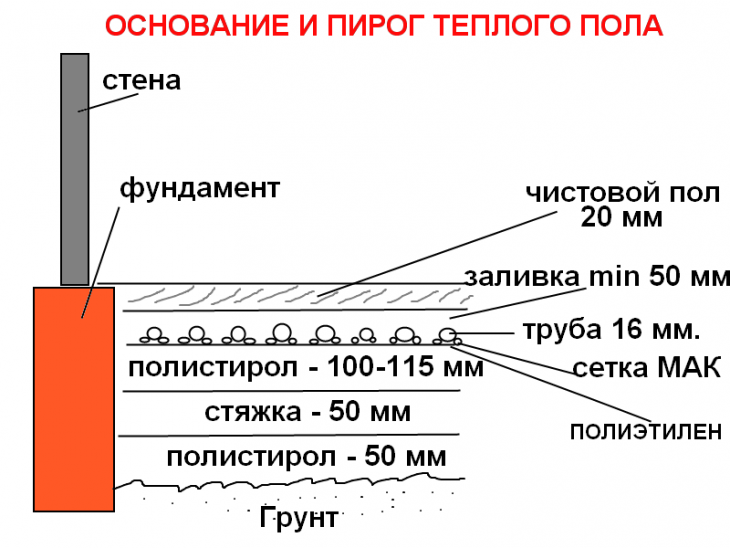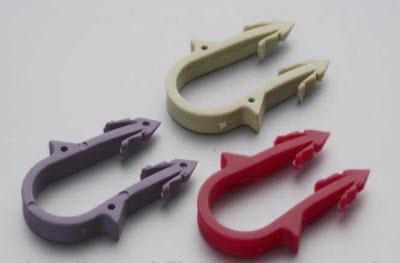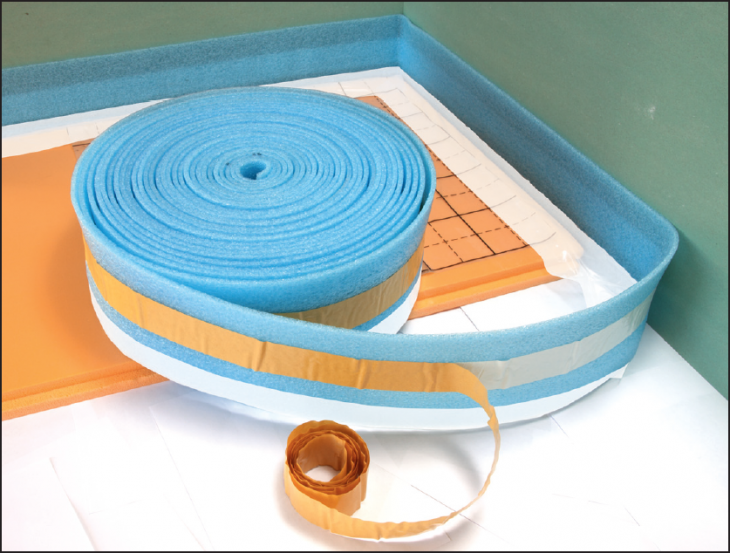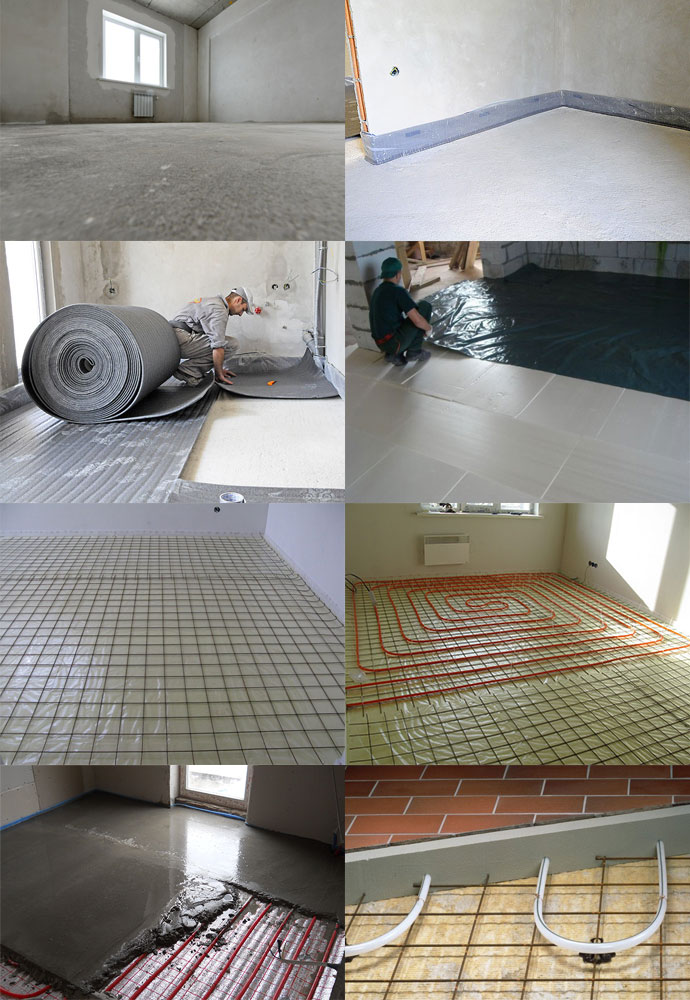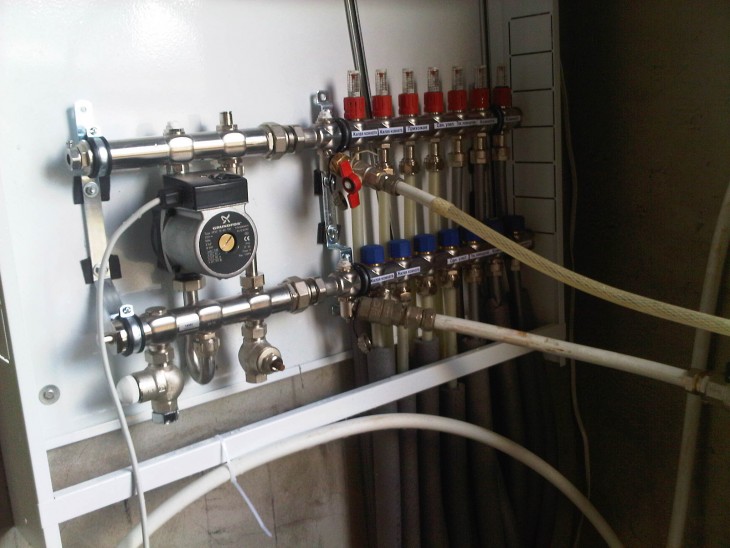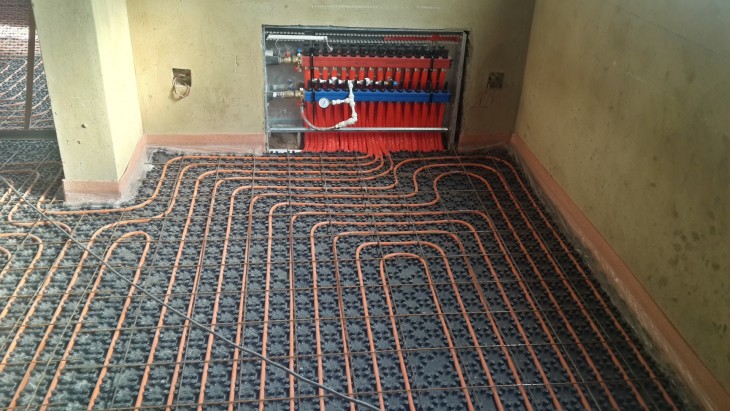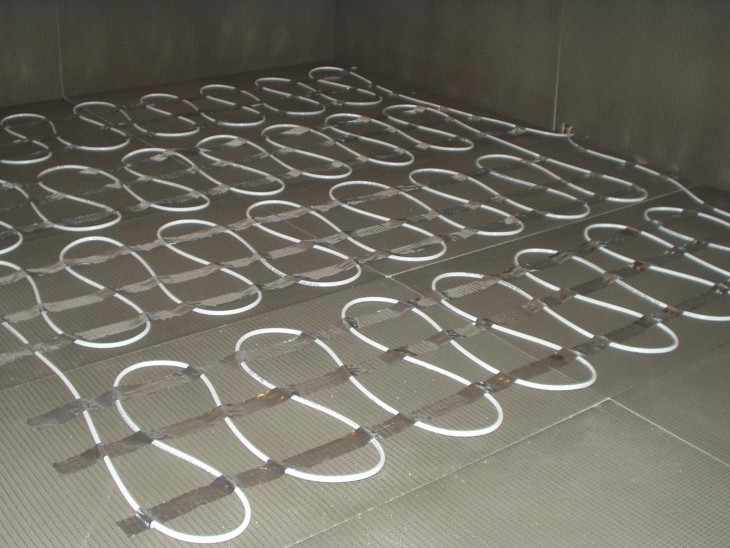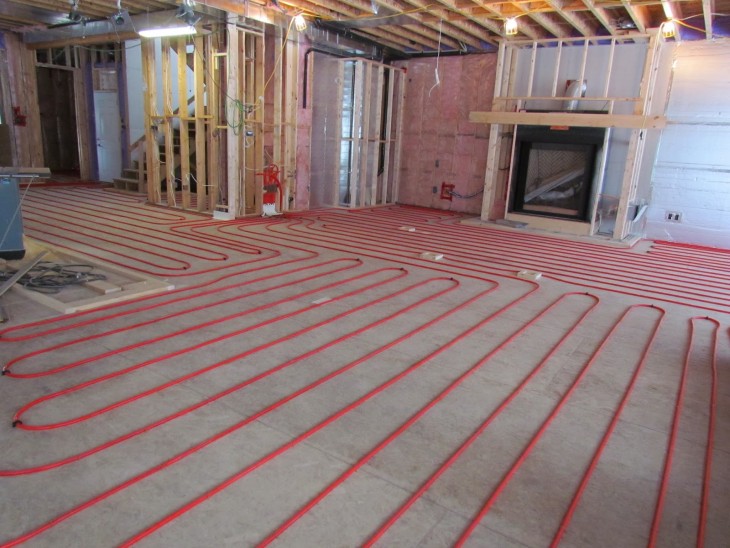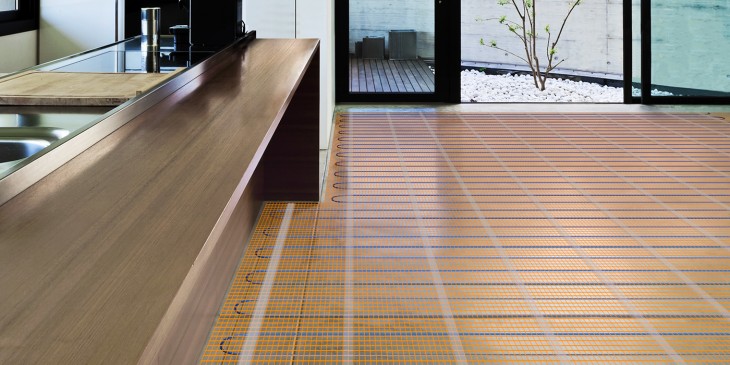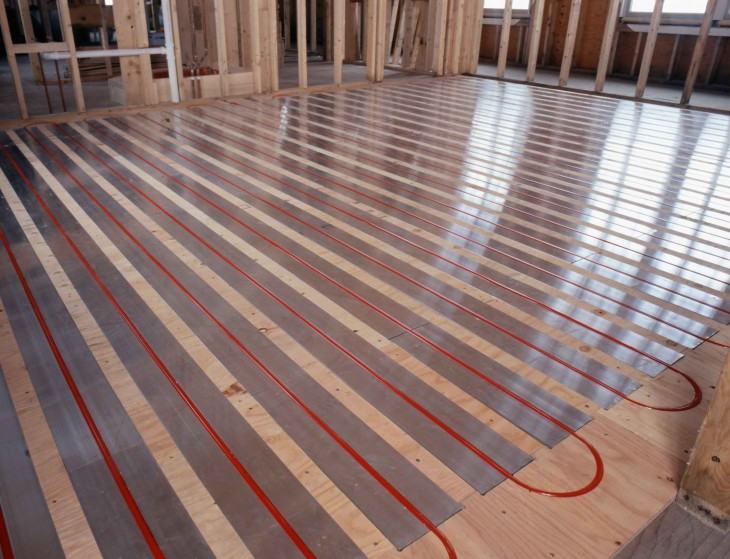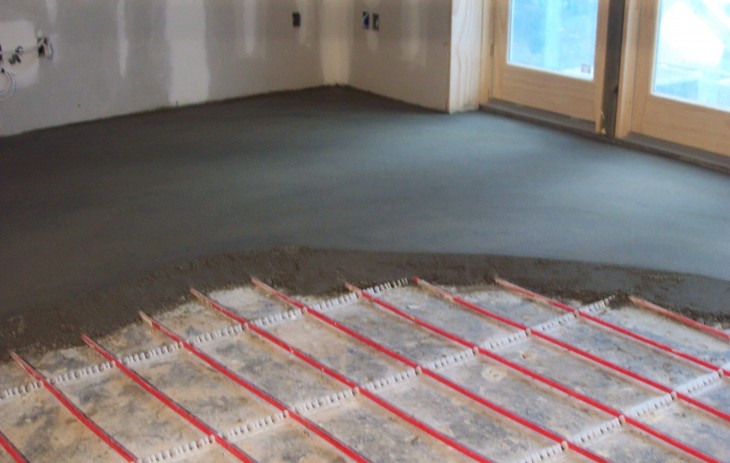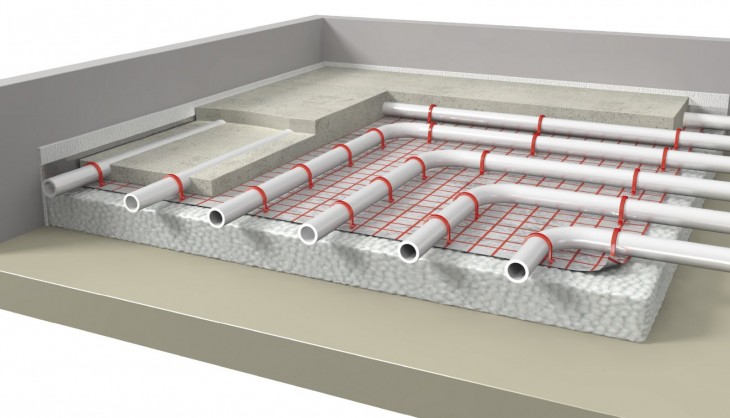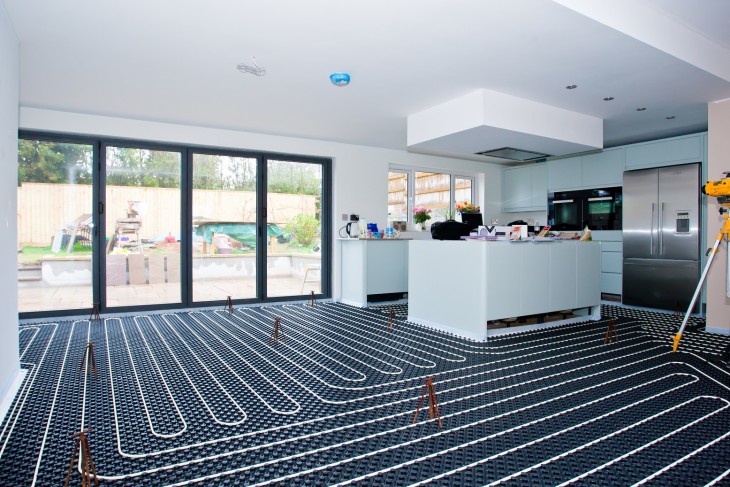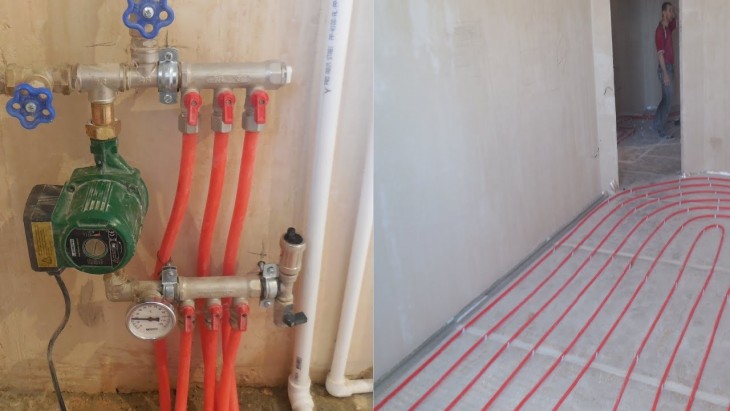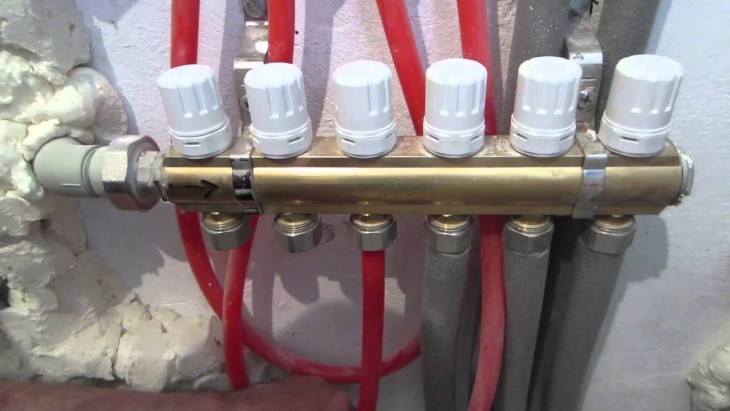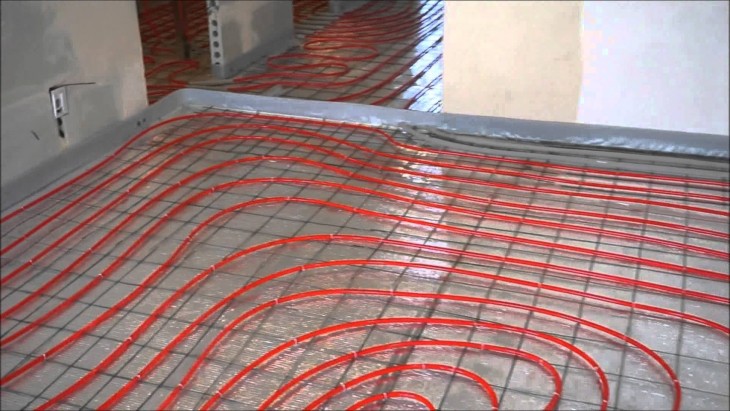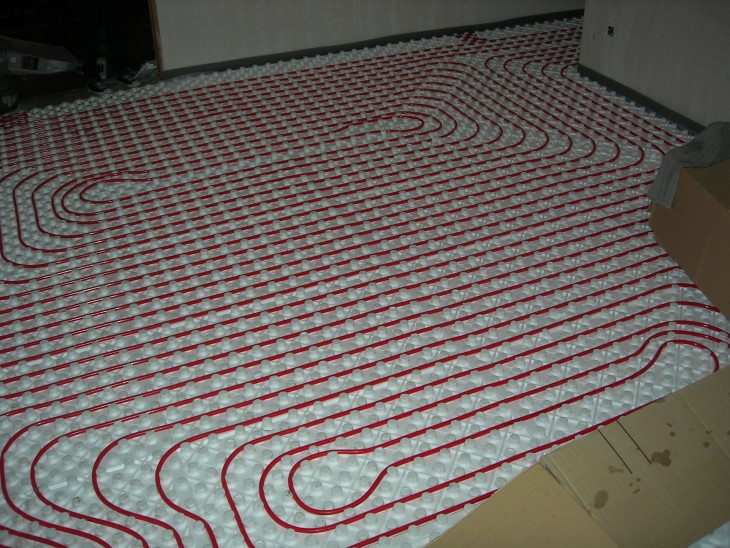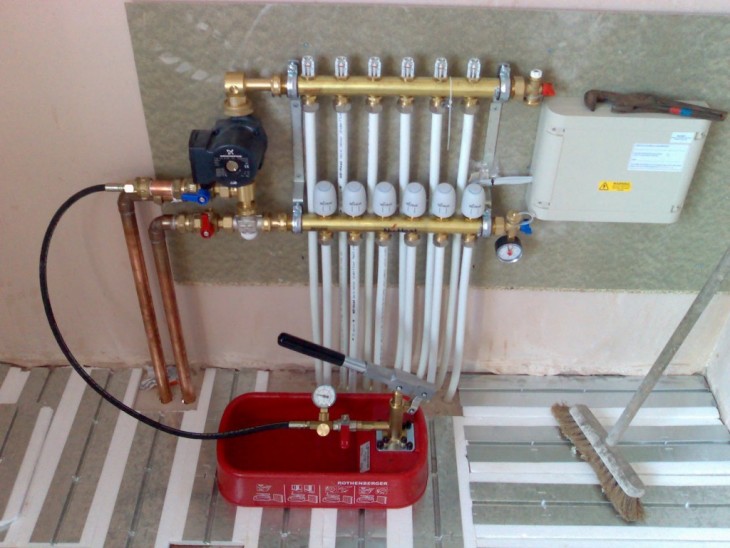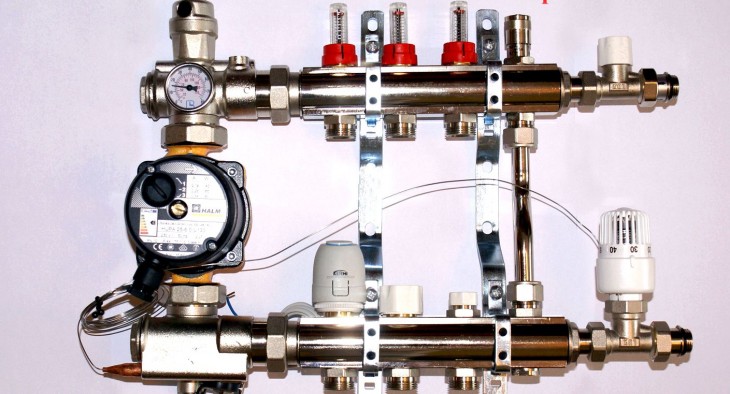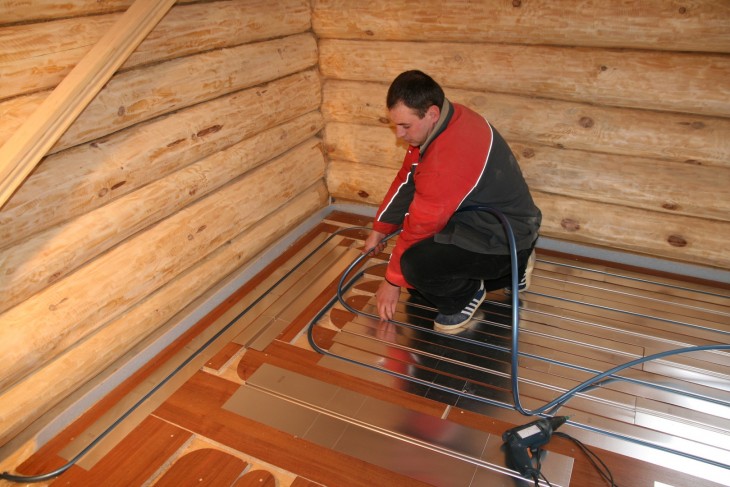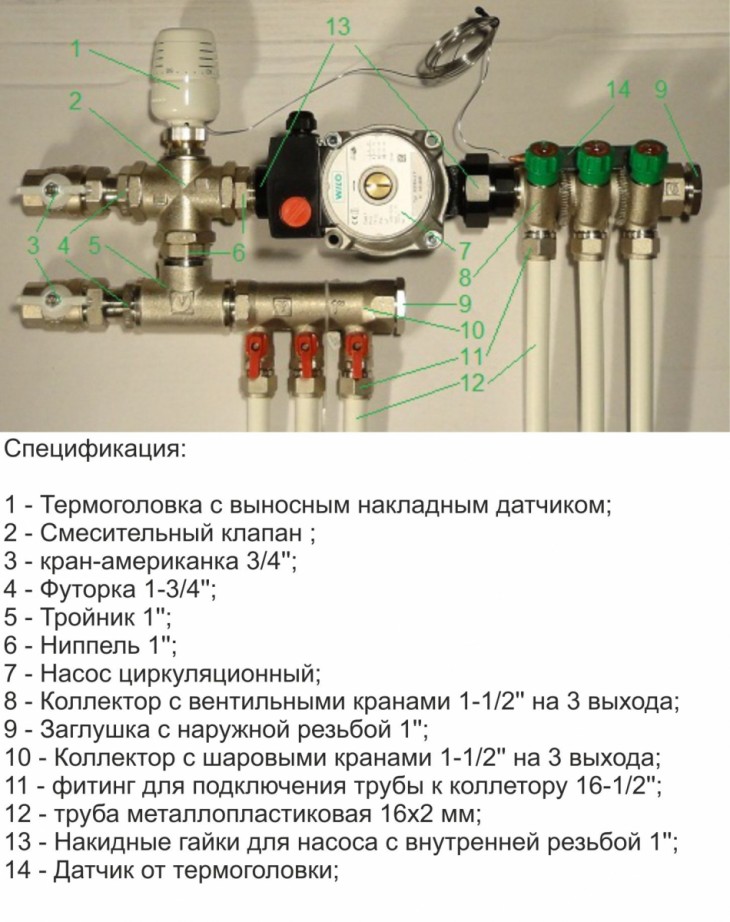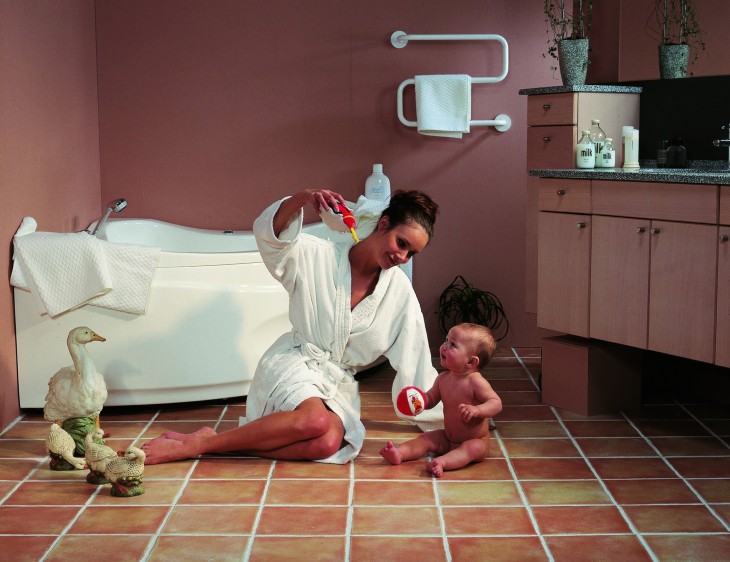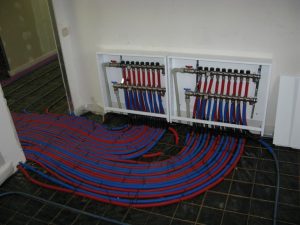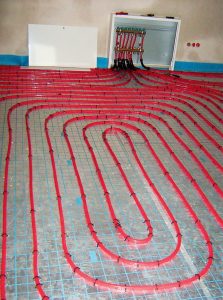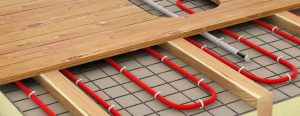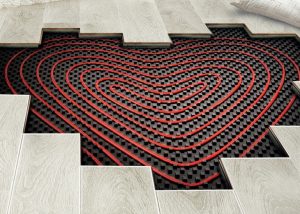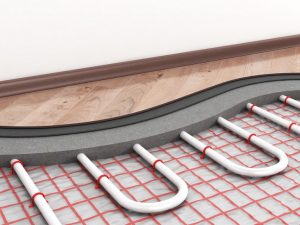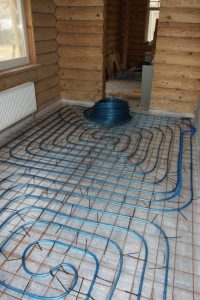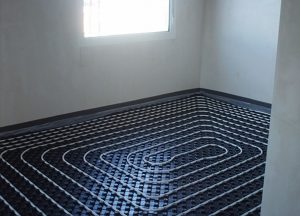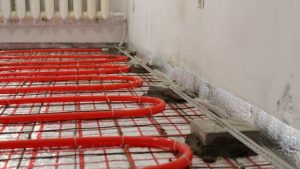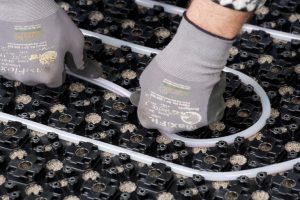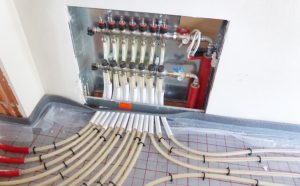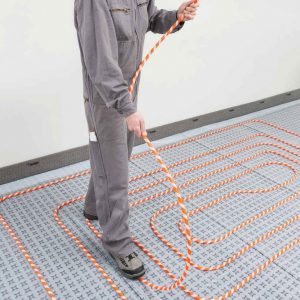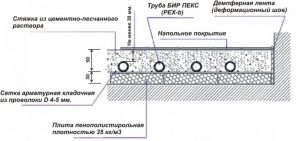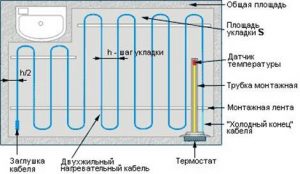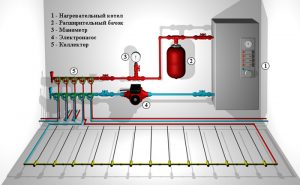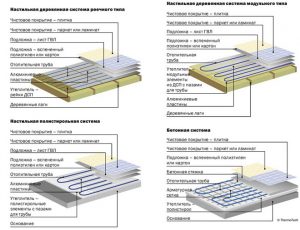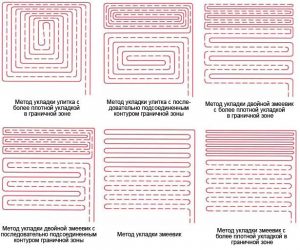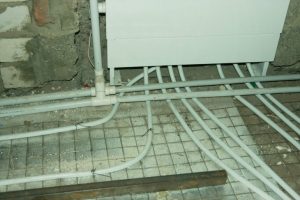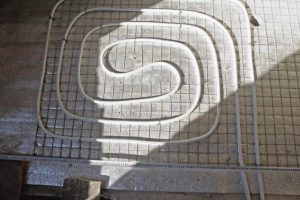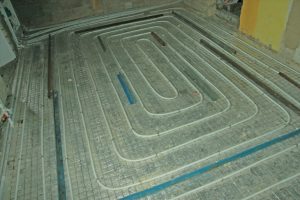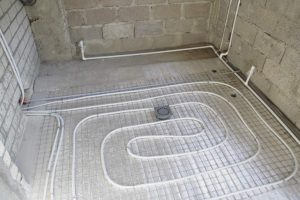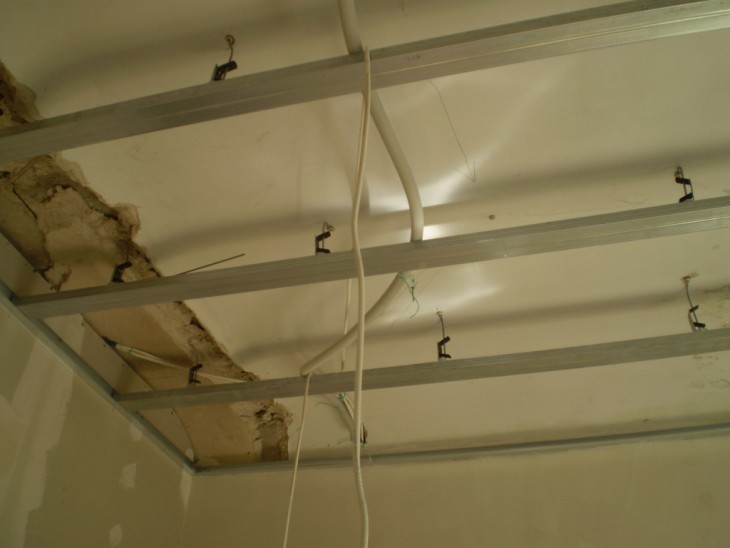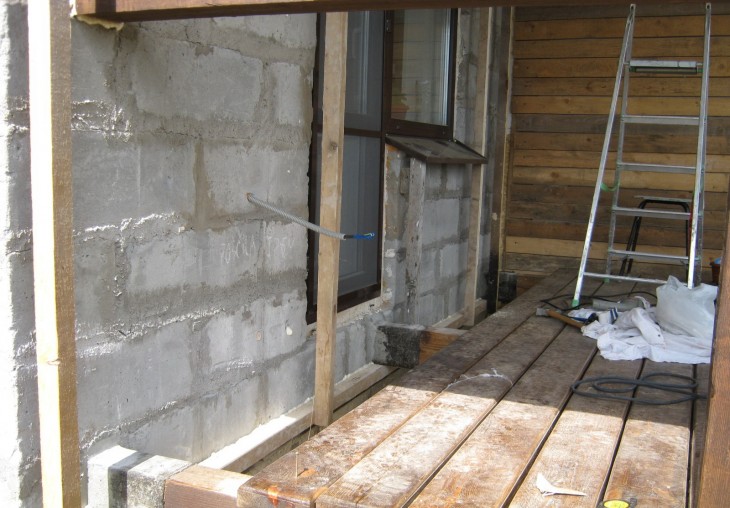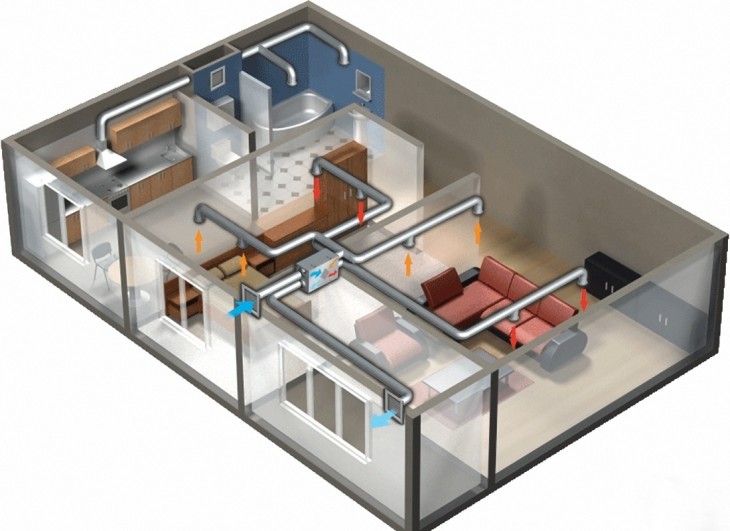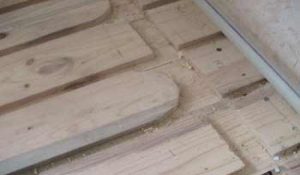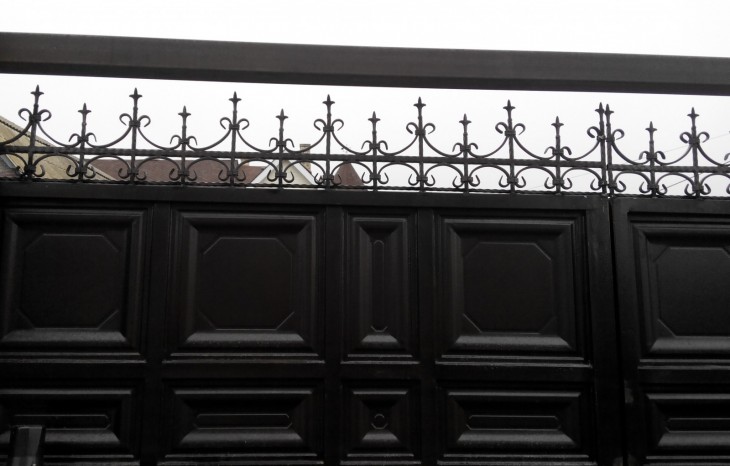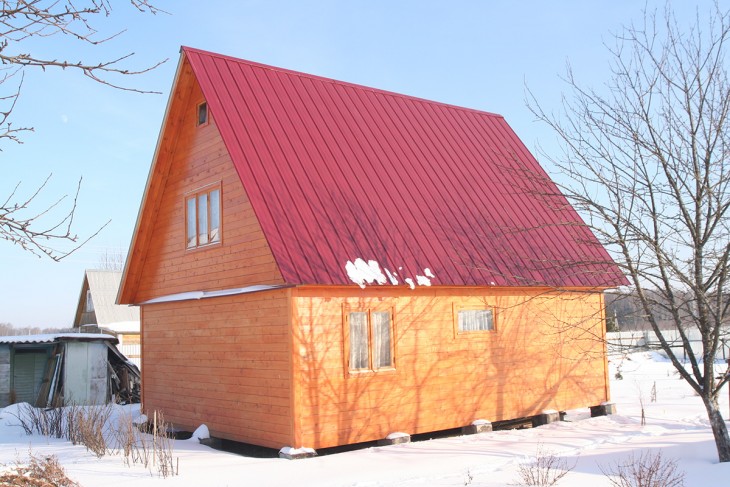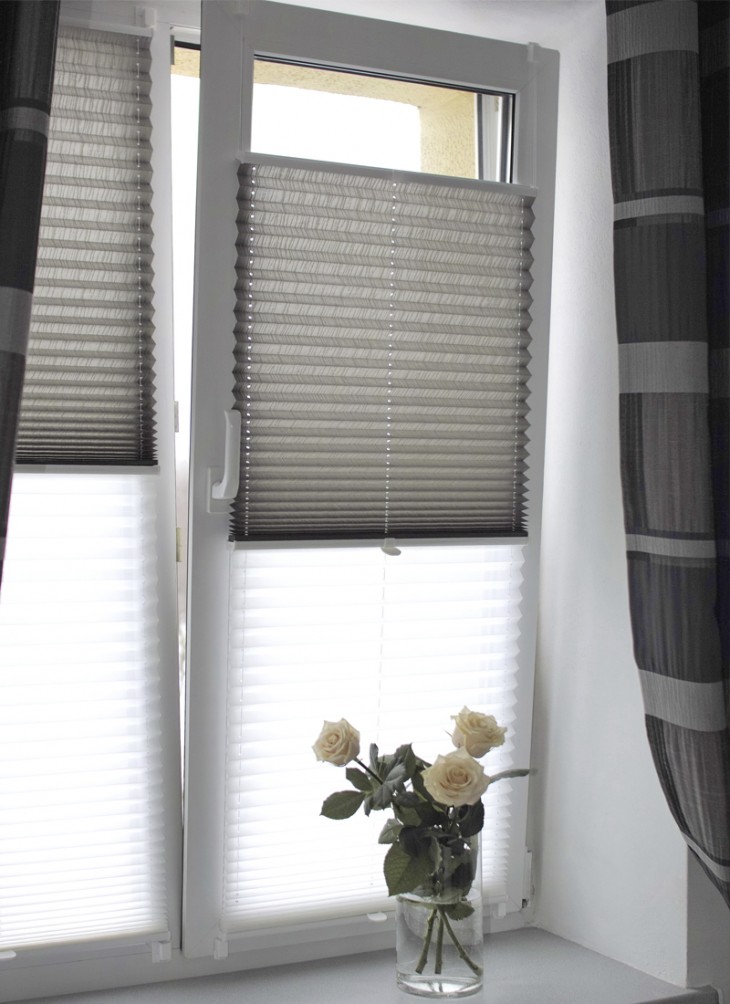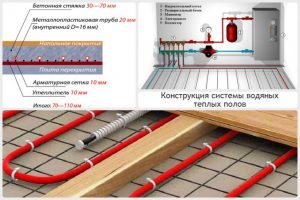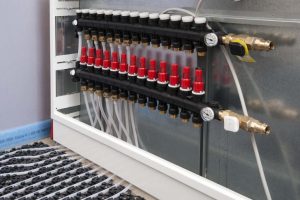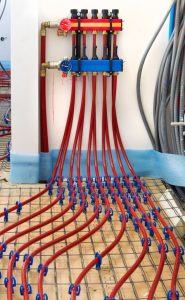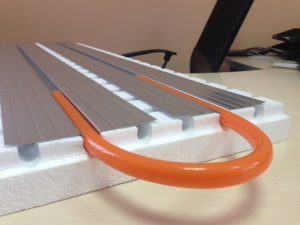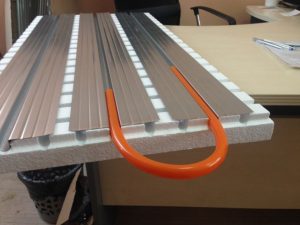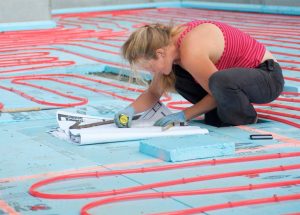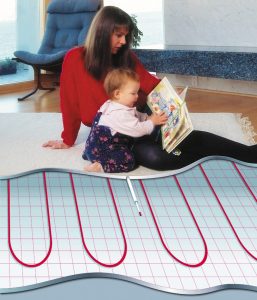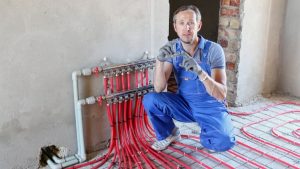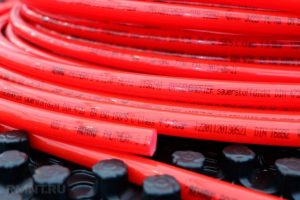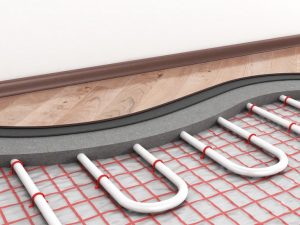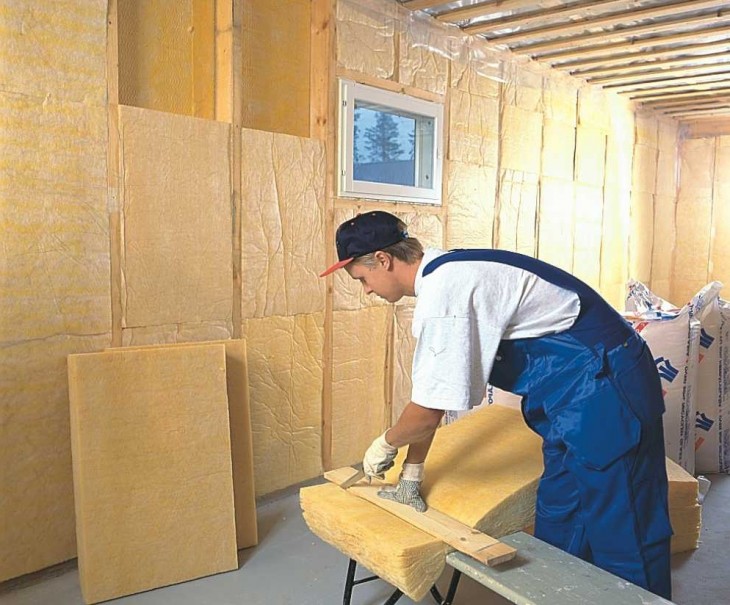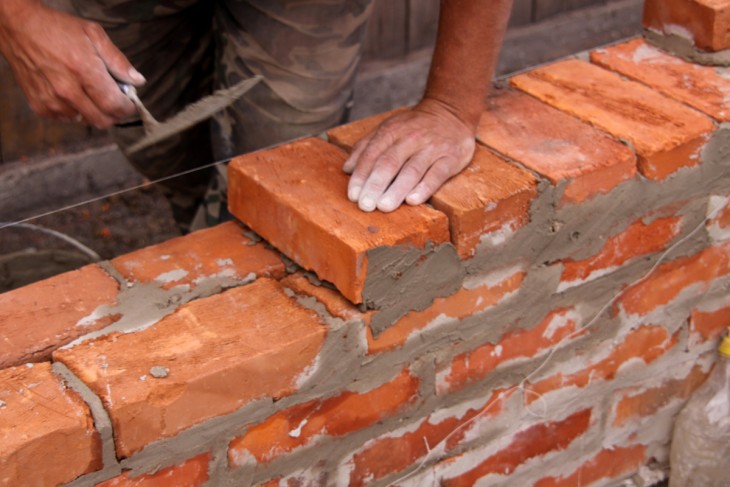Space heating based on underfloor heating technology is much more efficient than heating with conventional radiator batteries. Floor heating provides the room with normal air circulation: warm air is below, cooler above.
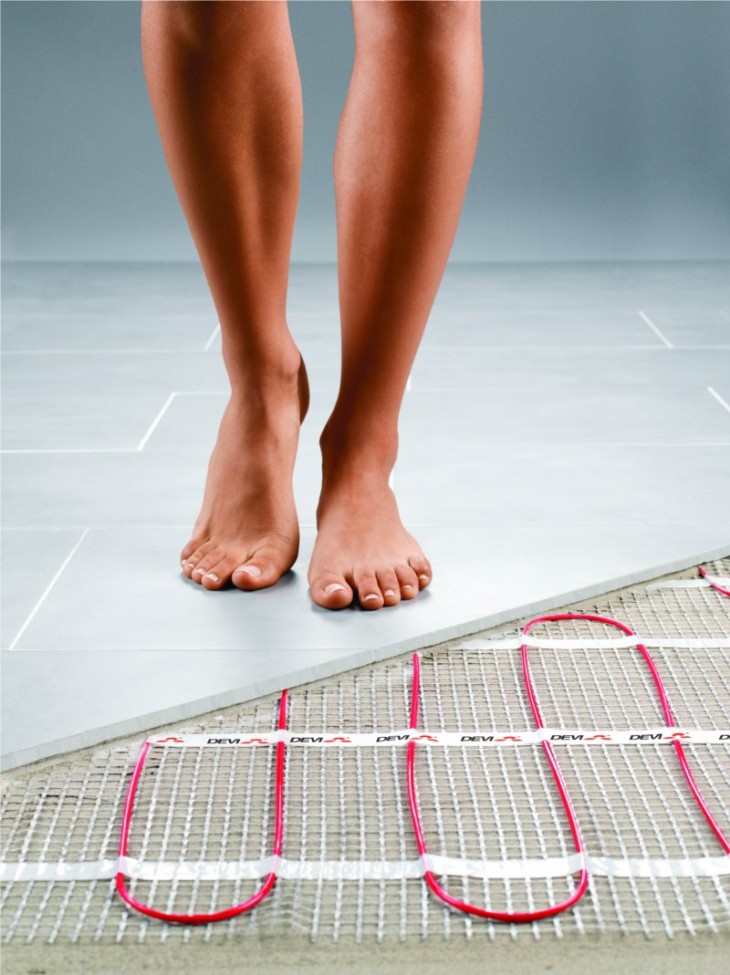
There are two options for floor heating in the house: electric and water. But the electric method of floor heating is very expensive to operate, so water floor heating is more popular.
Review Content:
How to organize a warm water floor in the house
To warm the house with water, you need a certain number of pipes. Water will circulate through the system and warm the floor.
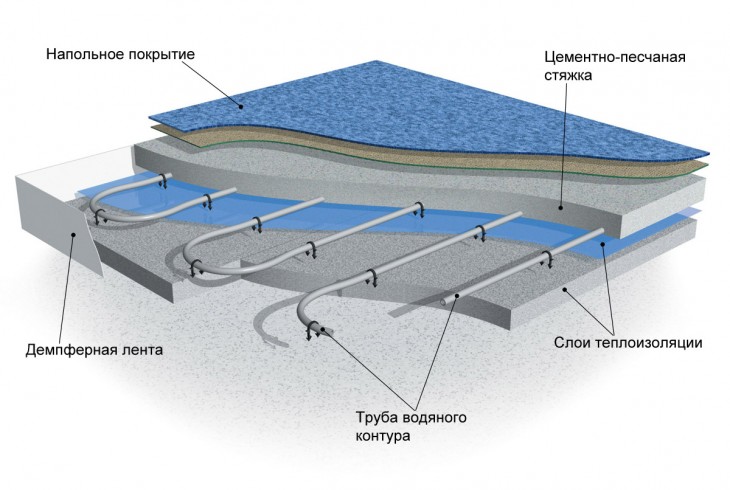
The bottom line is that you need to lay pipes under the floor. The process is not the easiest, but anyone can, if desired, be able to figure it out.
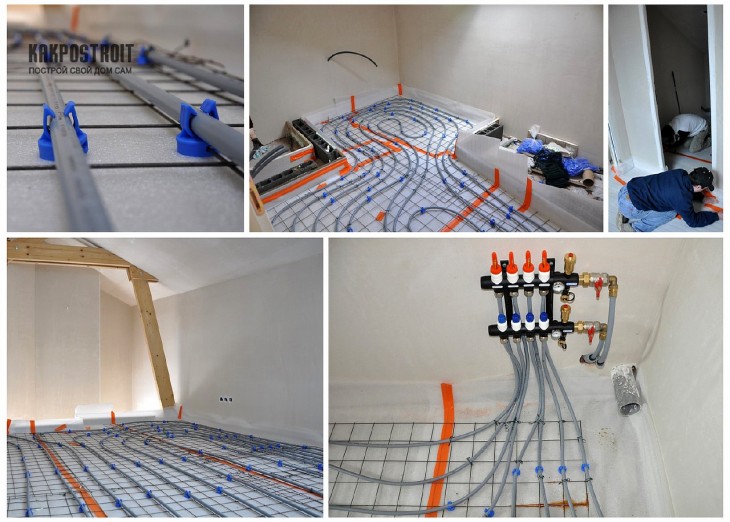
Which room is suitable for installing a warm floor
Since this option of floor heating requires a considerable number of pipes, it is mainly installed in private sector homes.
High-rise buildings are not adapted to this type of heating. The management company simply will not give permission to install a warm floor from general heating.
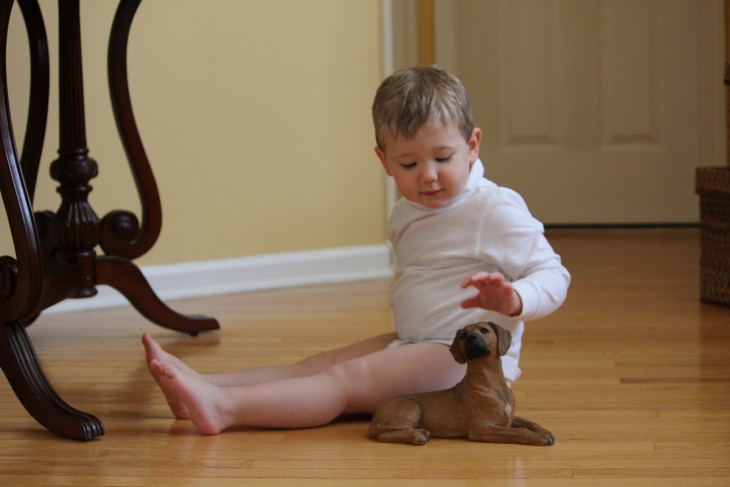
The majority of new buildings are equipped with systems for both radiator and water floor heating.

In order for the installation of the warm floor to be successful, you need to study all the nuances of this process.
Heat conductor temperature
For the floor to be at a comfortable temperature, the temperature of the water in the batteries should not be higher than 45C. In this case, the floor itself will heat up to 28C.
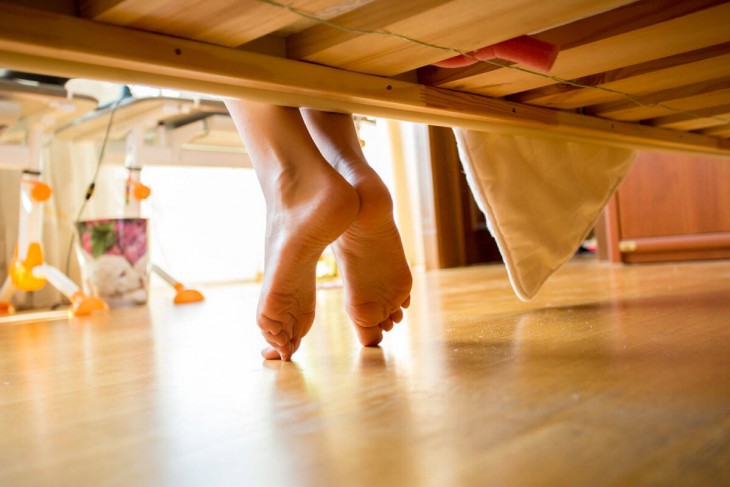
But in most cases, heating systems give a minimum temperature of about 65C. Only gas boilers are able to maintain the desired temperature level. They are effective precisely at low temperatures.
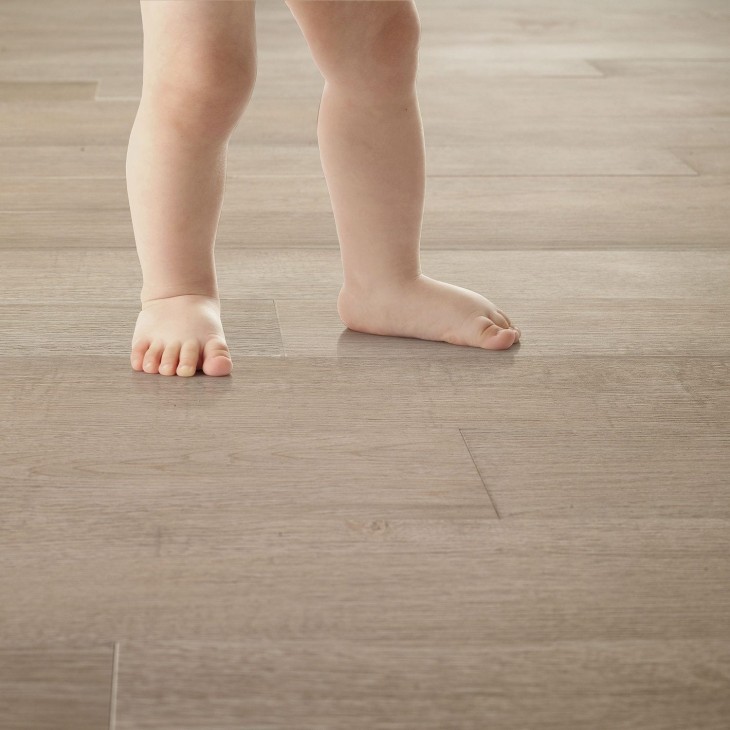
If other heating systems are used, then a mixing unit is required. In it, cooling water from the return pipe is added to the existing heating system.
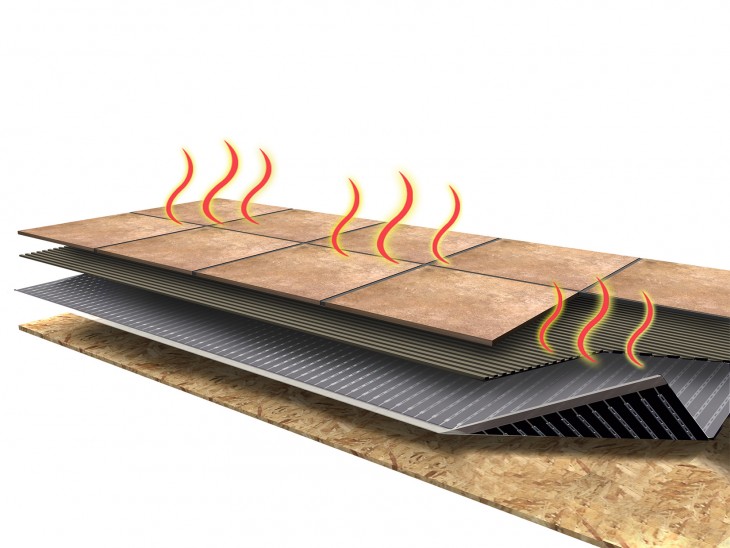
The cooling effect is as follows: hot water from the boiler enters the thermostatic valve, which opens the addition of cold water from the return pipe with a strong increase in temperature.
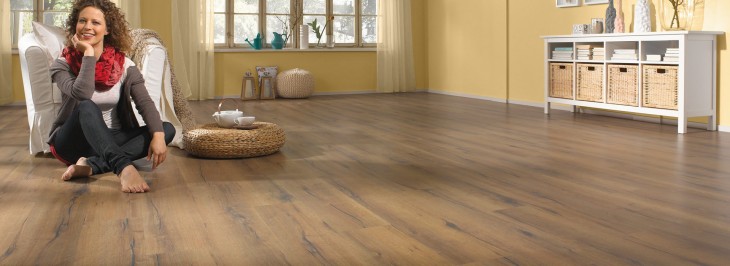
How to make a warm floor with your own hands: eyeliner
There are two technologies by which pipes are fixed:
Dry eyeliner. Stripes of metal with prepared channels for pipes are laid out on expanded polystyrene mats or on wooden plates. So the heat is more evenly distributed during heating.
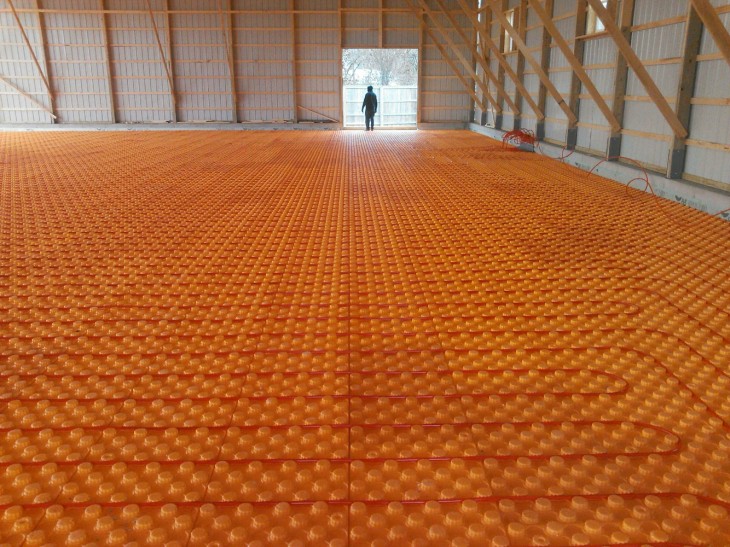
Plywood or other hard materials are laid on top. If it is planned to install underfloor heating under the tile, then the whole technology remains unchanged, only tiles are laid on the OSB or plywood using special glue.

Screeding or “wet” pipe laying option. Such a technology will require several layers:
- Insulation;
- Mesh or tape;
- Pipes
- Screed.
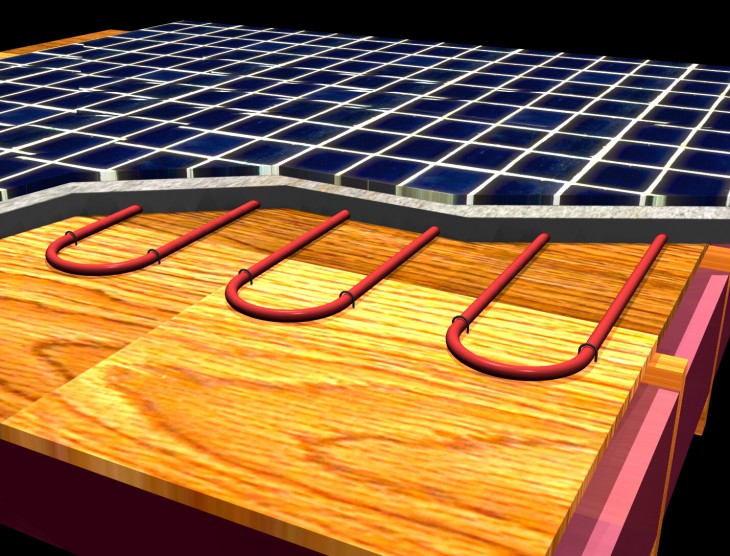
The floor covering is laid after the screed has set. You can put waterproofing or reinforcing mesh under the insulation.
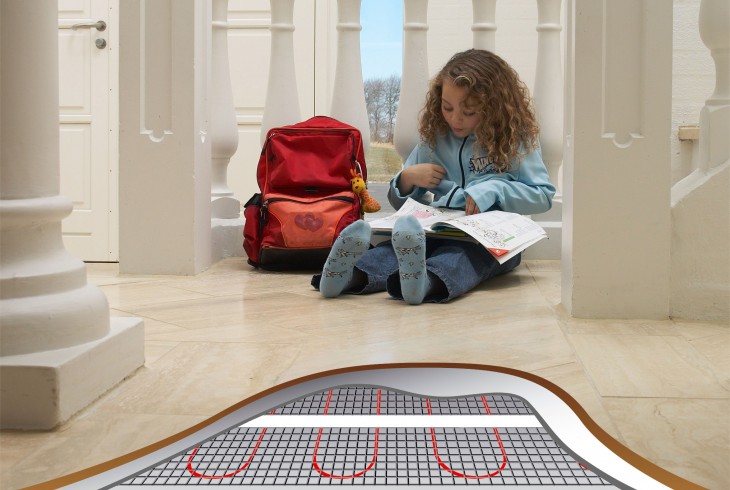
Note!
Damper tape must be used when installing the floor. It is laid where two circuits are connected, having previously rolled it over the entire area.
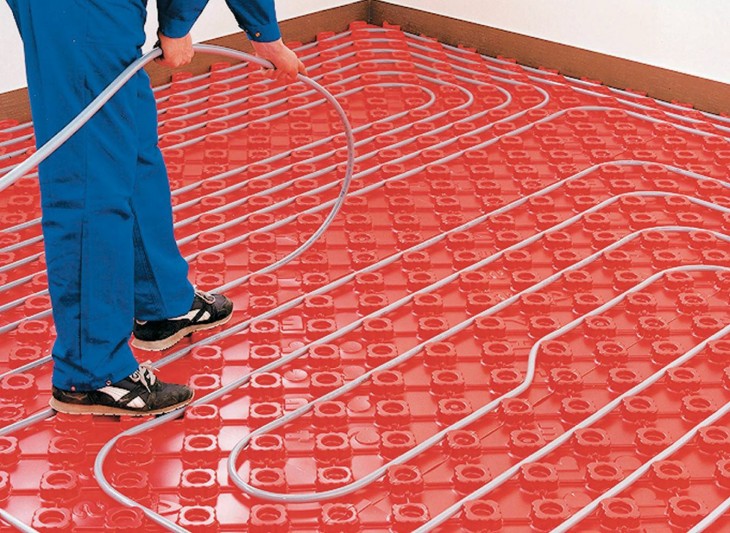
Which system is better?
How to make a warm floor, and which system to use? Both systems have both pros and cons.
The dry installation option will be more expensive if you buy all the components in the finished form. But their mass is much smaller and they can be used faster.
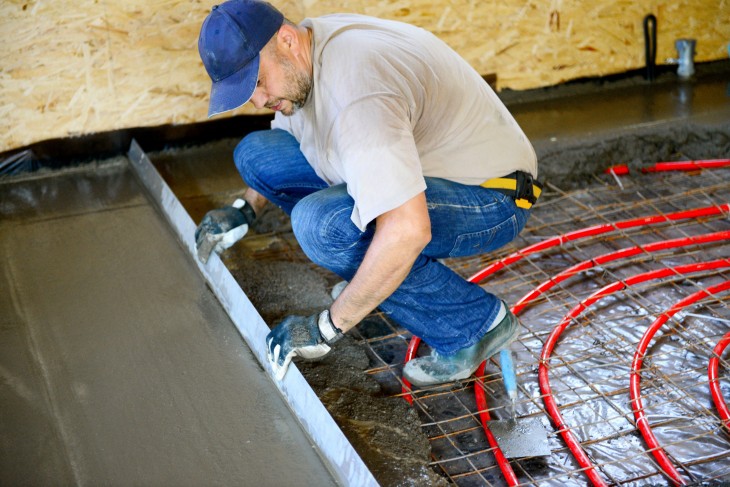
The screed has a large mass, and not every foundation can withstand it. Only having a foundation with a margin can one allow installation in this way.
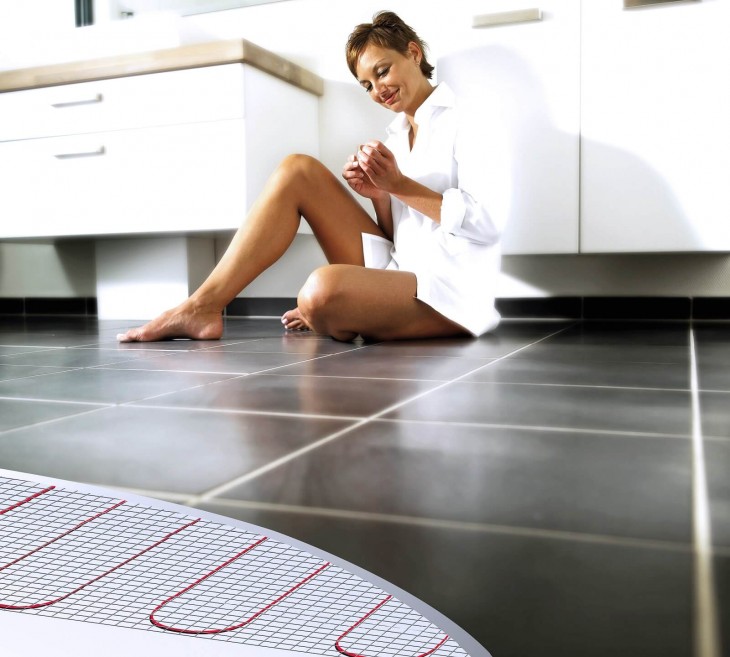
In case of damage to pipes laid by the screed method, it will be very difficult to repair them. The screed must be broken, and the repair itself can cause damage to adjacent pipes.
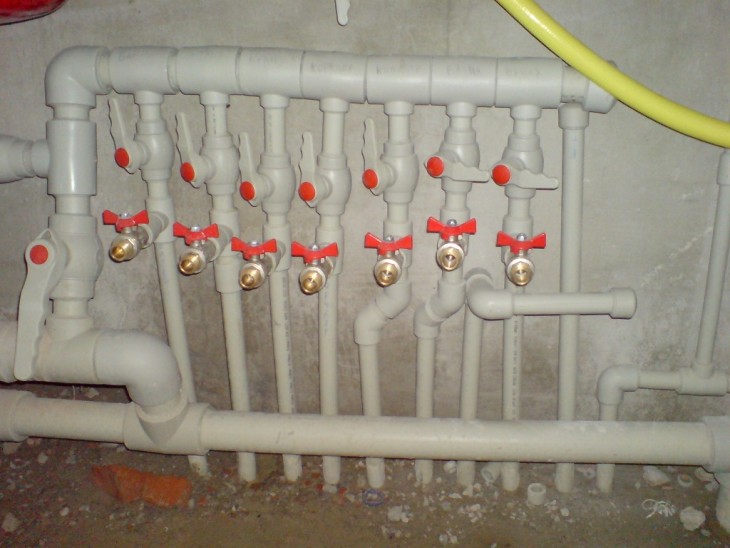
You can only use the underfloor heating in the screed on the 28th day after laying, because concrete should gain strength. Almost a month will have to do without heating.
Note!
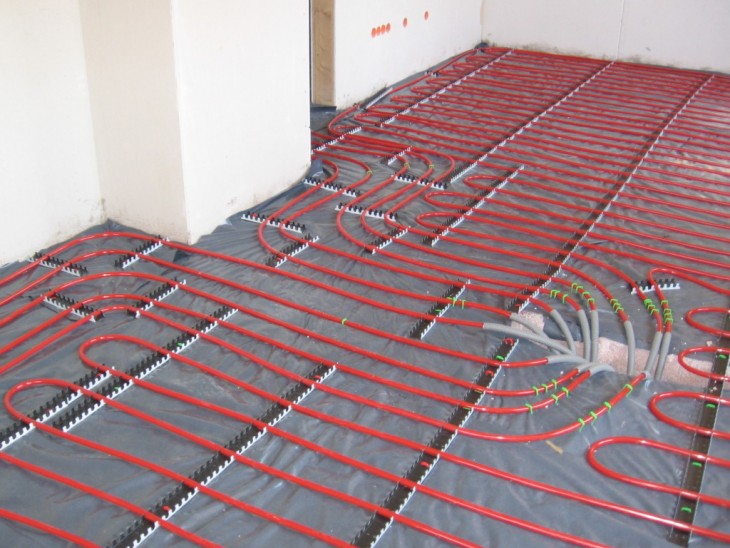
If the house has a wooden floor, then screed and high temperatures will contribute to the rapid deterioration of wood.
It is necessary to study all the initial data of the house in order to avoid serious consequences. Perhaps in some cases it is better to resort to dry technology.

Underfloor heating in your home is a great idea that you can implement by understanding the information about this process.
It is worthwhile to study the information found, see a photo of the warm floor on the Internet, as well as diagrams of piping systems for floor heating.
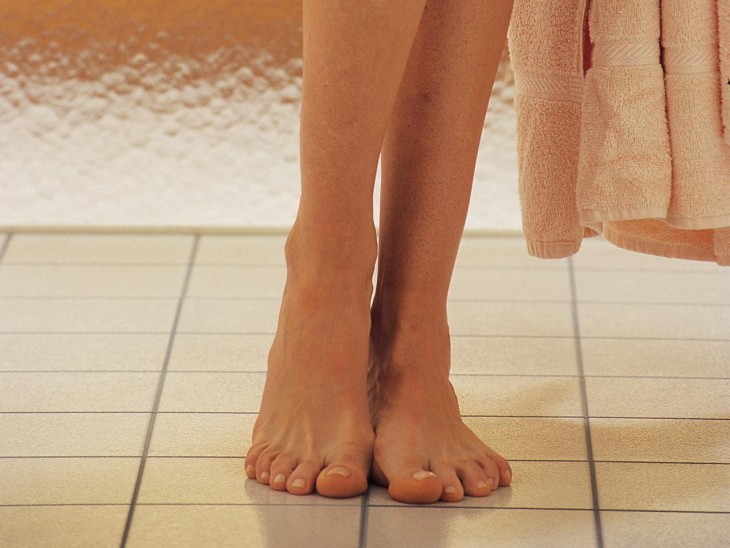
DIY flooring
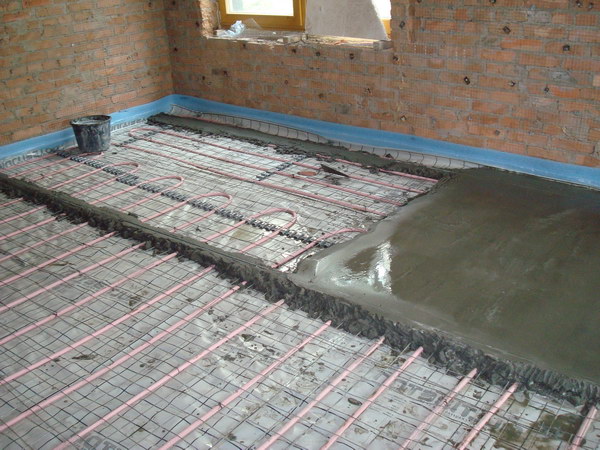

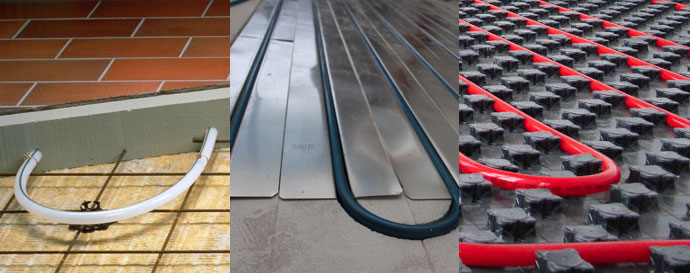
Note!
